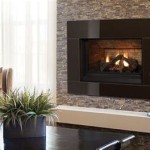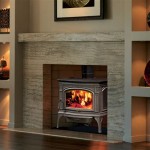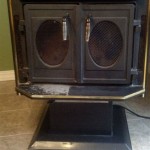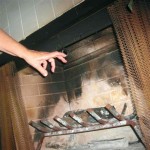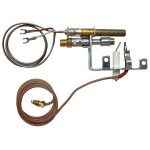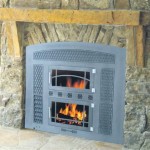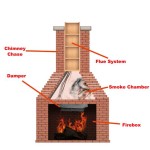Thermocouples for Fireplaces: Ensuring Safe and Reliable Operation
Fireplaces, whether gas-fueled or utilizing a pilot light system, rely on thermocouples for safe and reliable operation. A thermocouple is a critical safety device that prevents the uncontrolled release of gas if the pilot light or primary flame is extinguished. Understanding the function, limitations, and maintenance of thermocouples in fireplaces is essential for maintaining a safe and functional heating appliance.
The thermocouple’s primary function involves detecting the presence of the pilot light's flame. When the pilot light is lit, it heats the thermocouple, generating a small electrical current. This current is then used to hold open the main gas valve. If the pilot light goes out for any reason, the thermocouple cools down, the electrical current ceases, and the gas valve automatically closes, preventing gas from escaping and creating a potentially hazardous situation, such as a gas leak or explosion.
The principle behind a thermocouple’s operation is based on the Seebeck effect, a thermoelectric phenomenon. The thermocouple consists of two dissimilar metal wires joined at one end, called the hot junction. This junction is placed directly in the pilot light's flame. The other ends of the wires, the cold junction, are connected to the gas valve.
When the hot junction is heated, a temperature difference is created between the hot and cold junctions. This temperature difference generates a small voltage, typically in the millivolt range. This voltage is sufficient to energize a solenoid within the gas valve, which keeps the valve open, allowing gas to flow to the main burner. The design is inherently failsafe; if the voltage drops below a certain threshold, the solenoid de-energizes, and a spring-loaded mechanism inside the gas valve shuts off the gas supply.
Key Point 1: Understanding Thermocouple Functionality
The thermocouple is not a sensor in the traditional sense, but rather a thermoelectric device. It directly converts heat energy into electrical energy. The effectiveness of the thermocouple depends on the temperature difference between the hot and cold junctions and the specific metals used in its construction. Common material pairings include iron-constantan (Type J), copper-constantan (Type T), and chromel-alumel (Type K). The choice of materials affects the voltage output and the operating temperature range. In fireplace applications, the type of thermocouple used is often standardized by the gas appliance manufacturer.
Specifically, the pilot light heats the tip of the thermocouple. This heated tip generates a millivolt current. This tiny electrical current flows to a solenoid valve that controls the gas flow to the main burner mechanism. As long as the pilot light flame remains consistent and adequately heats the thermocouple, the solenoid valve remains open, allowing gas to flow to the main burner. If the pilot light is extinguished, the thermocouple cools, the millivolt current ceases, and the solenoid valve closes, preventing gas from escaping.
Key Point 2: Troubleshooting and Maintenance
A common issue encountered with thermocouples in fireplaces is a failure to hold the pilot light. This often indicates a faulty thermocouple that is no longer producing sufficient voltage to keep the gas valve open. Before replacing the thermocouple, it is important to thoroughly inspect the pilot light assembly. Ensure the pilot light is clean and properly adjusted, providing a strong, consistent flame that directly impinges on the thermocouple tip. Soot or debris can insulate the thermocouple, reducing its efficiency.
If cleaning the pilot light assembly does not resolve the issue, the thermocouple itself may need replacement. A multimeter can be used to test the thermocouple's output voltage. Consult the fireplace or gas valve manufacturer's specifications to determine the correct voltage range. If the thermocouple's output is below this range, it is likely defective. When replacing a thermocouple, ensure the new thermocouple is compatible with the fireplace model and meets the manufacturer's specifications. Incorrect thermocouples may not generate sufficient voltage or may be incompatible with the gas valve's control system, leading to unsafe operation.
Regular maintenance of the pilot light assembly and thermocouple is crucial for preventing problems. Periodically cleaning the pilot light orifice and checking the flame pattern can help ensure proper thermocouple heating. Also inspect the thermocouple for any physical damage, such as cracks or corrosion. If any damage is observed, the thermocouple should be replaced immediately.
Key Point 3: Safety Considerations
Working with gas appliances involves inherent safety risks. If unfamiliar with gas appliance repair, it is advisable to consult a qualified technician. Incorrectly installing or servicing a thermocouple or gas valve can lead to a gas leak, explosion, or carbon monoxide poisoning. Therefore, caution and adherence to safety protocols are paramount.
Before performing any maintenance or repair on a fireplace, always shut off the gas supply to the unit. Locate the gas shut-off valve, typically located near the fireplace or at the main gas supply line to the house. Turn the valve to the "off" position. After completing any repairs, check for gas leaks using a soapy water solution. Apply the solution to all gas connections and look for bubbles, which indicate a leak. If a gas leak is detected, immediately shut off the gas supply and contact a qualified technician.
Furthermore, be aware of the symptoms of carbon monoxide poisoning, such as headache, dizziness, nausea, and confusion. Ensure that the fireplace is properly vented, and that the chimney is free of obstructions. Install carbon monoxide detectors in your home, following the manufacturer's instructions, to provide an early warning of carbon monoxide buildup. Regular inspection and maintenance of the fireplace and its components, including the thermocouple, are essential for ensuring safe and reliable operation and preventing potential hazards.
Thermocouples serve a critical safety function in gas fireplaces. Proper understanding of their operation, maintenance, and potential issues is crucial for ensuring the safe and efficient use of these appliances within a home. Consulting with a qualified technician is always recommended when dealing with gas appliance repairs.

Gas Fireplace Won T Stay Lit Magic Touch Mechanical

Thermo Thermopiles Friendly Fires

Thermo Thermopiles Friendly Fires

Identifying Gas Fireplace Parts Www Mygasfireplacerepair Com

Gas Fireplace Won T Stay Lit Magic Touch Mechanical

Pse Pilot Assembly With Eco Thermocouple Propane Fire Parts Com

Propane Natural Gas Fireplace Pilot Assembly Include Tube Thermocouple

Understanding Pilot Lights On Gas Fireplace S

Replace Your Fireplace Thermocouple Pilot Assembly Step By

Gas Fireplace Pilot Lights Your Complete Guide Universe
Related Posts

